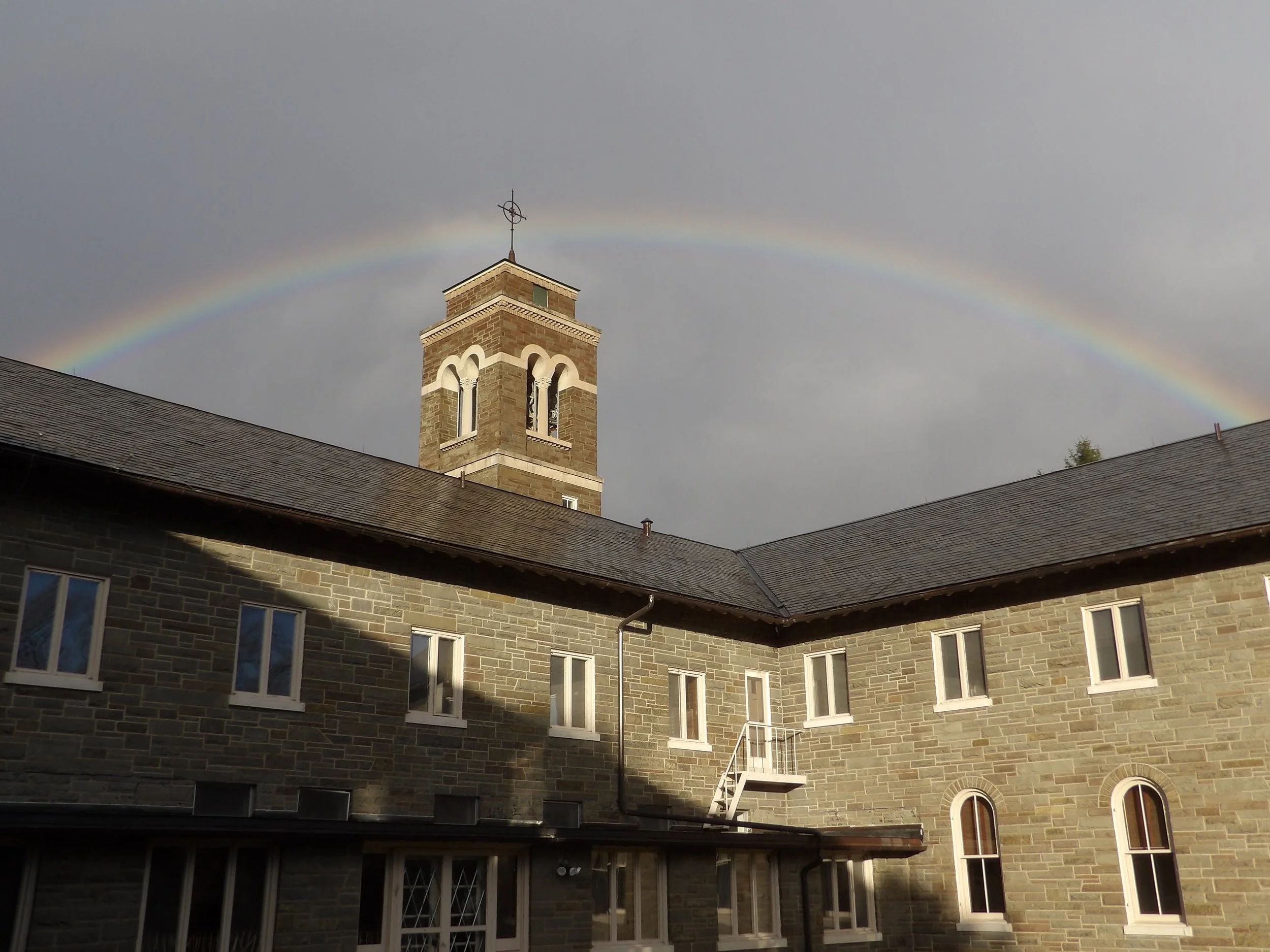
Our History
The Origins of the Discalced Carmelites
“As the Lord God of Israel lives, before Whose Presence I stand...” These words of the First Book of Kings brings us face to face with the origins of the Carmelite vocation. Over 800 years ago the first Carmelites lived as hermits on Mount Carmel in the Holy Land. Generations of Carmelites have found their call to seek God in a life of solitude and contemplation. By 1206 St. Albert, Patriarch of Jerusalem, gave them a rule of life which is still the basic Rule of Carmel today. Carmelites have always lived under the patronage of the Virgin Mother of God, the Queen and Beauty of Mount Carmel.
In the 16th century, St. Teresa of Jesus entered the Order. Following a profound conversion experience, she felt inspired by God to restore the original zeal and primitive form of the Carmelite vocation, which had fallen into disuse. Her ardent desire “to please the Lord in some way,” led to a lifelong pursuit of following the Gospel counsels as perfectly as she could. St. Teresa founded 17 Carmels in her lifetime and has been named a Doctor of the Church. Together with others, she succeeded in restoring the Carmelite Order to its fullness.
A History of Faithfulness: Rochester Carmel
The Rochester Carmel traces its roots to colonial America and a time when penal laws did not permit the existence of religious houses. In that day, following a call to religious life necessarily meant traveling to Europe, which is exactly what Ann Matthews, a native of Maryland, did in 1754. A member of the Hoogstraten Carmel, located in present day Holland, she was later joined by two of her nieces.
In 1790, after the Revolutionary War had ended and the free practice of religion was possible, Ann Matthews, now Mother Bernardina, returned from Holland and founded the first Carmel in the United States at Port Tobacco, Maryland, along with her nieces and an English nun from the Carmel of Antwerp. The monastery represented America’s first religious community. Growing to more than 30 members, the community moved to Baltimore in 1831 and continued to thrive.
Carmelites spread their order by founding “daughter” monasteries. Of the more than 60 Carmelite monasteries in the U.S. today, over two thirds of them can trace their origins to the Port Tobacco/Baltimore community. Rochester is no exception. The Rochester Carmel was founded in 1930 by Mother Beatrix of the Holy Spirit, who had entered the Baltimore community in 1868. At 84 years old, Mother Beatrix answered the request of Bishop John F. O’Hern, arriving from the Philadelphia Carmel with four sisters to found a community on Saratoga Avenue in downtown Rochester.
By the 1950s increased urbanization and the growing number of sisters made it necessary to find a more suitable location. In 1956, the nuns entered their new monastery at 1931 West Jefferson Road in Pittsford, New York, a suburb of Rochester.
The beautiful monastery, modeled on historic Carmelite monasteries in Spain, was constructed specifically to accommodate the Discalced Carmelite way of life. Dedicated as the Monastery of Our Lady and St. Joseph, it provides a “paradise set apart” for a life of prayer, contemplation, silence and community. It is here, on our own Mount Carmel, that each sister abandons herself to God for the sake of His Church.

What do our Saints say about Carmel?
St. Elizabeth of the Trinity:
" A Carmelite is a soul who has gazed on the Crucified, who has seen Him offering Himself to His Father as a Victim for souls and, recollecting herself in this great vision of the charity of Christ, has understood the passionate love of His soul, and has wanted to give herself as He did.”
St. Teresa Benedicta of the Cross:
“Those who join the Carmelite Order are not lost to their near and dear ones, but have been won for them, because it is our vocation to intercede to God for everyone.”
St. Therese of the Child Jesus and the Holy Face:
“I felt that Carmel was the desert in which God wished to hide me too. I felt this so intensely that there could be no doubt about it. This was no childish dream nor the enthusiasm of a moment. It had about it the certainty of a divine call, and this indescribable feeling was accompanied by deep peace.”






